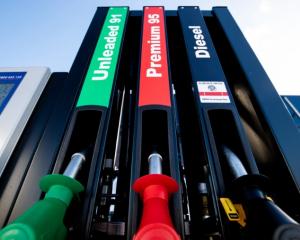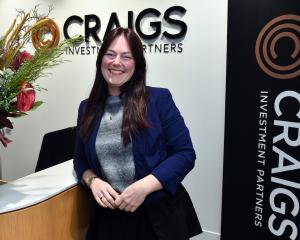
These are not the best of times for retail traders due to the Russia-Ukraine conflict which has led to the rising cost of commodities like Oil, Copper, Nickel and also due to rising inflation pressure in the United States, Europe, UK & many other countries.
The US Federal Reserve plans to increase interest rates in this year, with 4-6 rate hikes expected to tackle rising inflation and when the country with the world’s reserve currency hikes their interest rate, it affects the market equilibrium.
Historically any time there is economic uncertainty such as due to pandemics, conflict etc., the markets always suffer due to uncertainty. The NASDAQ has dropped by almost 18%, S&P is down almost 12% and many market analysts are predicting that we could be in a bearish market.
Such uncertain market conditions & a risk averse environment means that the risks for traders are very high, especially for that that trade complex products like CFDs using margin.
What are CFDs?
Contract for Difference (CFD) is an agreement between two people (trader & the broker) to exchange the price difference of an underlying asset at the time the contract is affected and the time it ends without actually owning the asset.
One main reason due to which CFDs are popular amongst online retail traders because it exposes them to multiple asset classes like precious metals, oil etc. without actually owning the assets. Hence you have Oil CFDs, Gold CFDs, and Currency CFDs etc.
CFD trading also allows traders to make money from the price changes in an asset when the price goes up as well as when it goes down.
Second main reason for the popularity of CFD trading is the active marketing & promotions by CFD brokers which makes them very visible. Hence, they are popular option among retail traders who want to trade currencies & other instruments.
Volatility could affect Retail CFD Trading Positions
CFD traders can make money from predicting the price direction of an underlying asset and trading accordingly. But uncertainty in today’s markets due to conflict and expected interest rates hikes make predicting the markets a precarious endeavor.
Experts fear that retail CFD traders may witness a repeat of the losses recorded during the Covid-19 pandemic in 2020. According to a retail investor trading report during Covid-19 published by the ASIC after sampling 12 major Australian CFD providers, it was discovered that retail client losses while trading CFDs between 16th and 22nd March 2020 stood at a whopping $234 million.
These losses were due to the fact that the CFD traders weren’t able to predict the market direction correctly during the period in view, and the extreme volatility made it difficult to close their losing positions.
Ongoing sanctions imposed on Russia by different countries due to war have affected prices of Commodities like Oil, Nickel etc.
Most companies which have exposure to this risk are traded on various exchanges across the world and their loss means that CFD traders with exposure to these stocks & commodities could be at risk of losing their funds.
Also, there is looming risk of Central bank tightening across various regions. For example, If the US Fed proceeds with higher number of rate hikes to control the inflation in the US, then there is a risk of slowdown in global growth, which will negatively impact the stock markets.
These risks also affect the currencies of all the countries, with Emerging market currencies & Commodity based currencies experiencing highest volatility.
Managing CFD Trading Risks faced in Uncertain market Conditions
There are suggestions that experts point out in managing risks associated with CFDs.
#1 Avoid leverage
Leverage refers to money borrowed from your broker to trade.
In the capital market, for you to make a modest profit, you must invest lots of money. Most CFD traders in the market find it difficult to raise money or don’t have enough capital, so they use leverage from their broker to supplement their capital.
Leverage is expressed as a ratio example 1:30 meaning for every $1 the trader has, the broker allows the trader to trade $30 worth of asset. This means if a trader has $1,000 the broker allows him trade with $30,000 worth of asset meaning initial capital is $1,000 and money borrowed from the broker is $29,000.
This use of leverage is even more risky now because of conflict in Europe, and the rising interest rates globally. There is more of a Risk averse environment.
Many growth stocks have fallen more than 50% in the last 6 months. Also, major stocks have fallen more than 10%.
As in the example above of leverage, if the underlying asset loses its value by 5% the leveraged CFD trader loses $2,500 (5% of $50,000) but if the investor had not used leverage, he would have lost just $50 (5% of $1,000).
While there are leverage restrictions at other major regulators like ASIC, FCA, but the FMA does not impose this restriction yet, so the regulated New Zealand forex brokers can still offer high leverage for forex & CFD trading, which is risky for traders. So, traders must self-regulate.
#2 Don’t trade with Unregulated Brokers
Every broker must hold a license issued to them by a regulatory body from the Country where they operate or from another country or a combination of both. Over regulation is better than under regulation. The more licenses a brokerage firm holds, the safer it is.
In New Zealand, the forex & CFD brokers must be regulated with Financial Markets Authority New Zealand (FMA).
Some other major regulators known for efficient market policing for CFD trading include:
Australian Securities and Investments Commission (ASIC)- Australia
Financial Conduct Authority (FCA) - U.K.
Unregulated brokers don’t follow any laid down rules set by regulators to safeguard trader’s funds.
For example, the UK requires firms that offer CFDs and CFD like options to limit their leverage to between 30:1 for currencies and lower leverage of 2:1 depending on the volatility of the underlying asset.
The major reason for limiting leverage was to save retail traders from losses. The ASIC has also restricted leverage to 30:1 for retail traders.
An unregulated CFD broker in comparison can go ahead and offer leverage as high as 1:1000 or even higher to traders, thereby magnifying potential loses if the market moves against these traders.
Even though FMA regulated by brokers can offer high leverage, but still the traders are protected in the sense that there is an oversight on the activities of the broker.
To know if a broker is regulated, check the FMA regulator’s website for a list of licensed derivatives issuers and their contact/website address. All this information is available on the regulator's website.
A trader should not look elsewhere other than the Regulator’s website for broker’s information, otherwise there is a high risk that you could be visiting cloned broker websites set up by scammers to defraud unsuspecting victims.
#3 Use a broker with Negative balance protection
Negative balance protection ensures that a CFD trader can lose only his initial capital and not the leveraged funds loaned to him by the CFD broker.
Due to the uncertain market conditions today, a single news report or political decision can send the value of an underlying asset tumbling downwards, thus exposing the CFD trader to losses exceeding his initial investment amount.
A report by the ASIC focusing on the COVID 19 period in March 2020 said 5,448 retail CFD trading accounts went into a negative balance of more than -$4 million in aggregate.
A negative balance of -$4 million means not only did these CFD traders lose their initial capital, they also owed their broker a whopping $4 million.
Many regulators including the FMA have mandated CFD brokers to ensure that a CFD trader’s position is closed out when the funds in their trading account falls to 50% of the margin needed to keep their positions open.
Also, the UK’s FCA also mandated all CFD brokers to offer negative balance protection. FMA regulated CFD brokers also offer this.
Ensure that your CFD provider offers negative balance protection.
#4 Use Guaranteed Stop loss orders (GSLOs)
A GSLO is a hybrid of the traditional stop order.
A traditional stop order allows a trader set a price limit at which his trading position will be closed out and a market order immediately triggered to either sell off the asset or buy an asset.
However due to uncertain market conditions we face today, significant global events such as conflict and sanctions can result in unexpected and rapid market movements. The price of an asset can fall so drastically that executing a market order at the exact price is difficult. The trader is then stuck with the assets since there is no buyer.
Also rogue brokers can hunt your traditional stop order by artificially driving asset prices up or down thus triggering your stop order and consequent market order and forcing you to sell or buy an asset only for the price of the asset to rebound.
A GSLO is a product that guarantees the trader that his positions will be closed out at his specified price irrespective of how fast or how low the asset loses its value.
For example, FMA regulated CFD broker CMC markets offers traders GSLO protection upon payment of premium which is refundable should you cancel the GSLO before it is executed.
Ensure your broker offers GSLOs for CFD products.
CFD Trading is for Professional Traders
Major regulators like FCA require CFD brokers to publicly highlight on their website the percentage traders that with that broker. It is not required by FMA as of yet.
But as per this information from the websites of major UK based CFD brokers, as high as 84% of traders lose on some of these brokers. So, the data is very clear that most of the CFD traders lose.
If you are risking everything you have in hope of making money from CFD trading, then you must avoid it. CFD trading is only suitable for professional traders who have adequate experience & understanding of the risks associated with these complex instruments.












